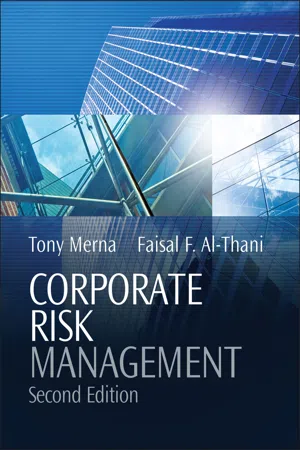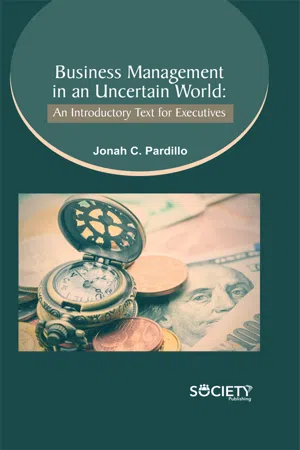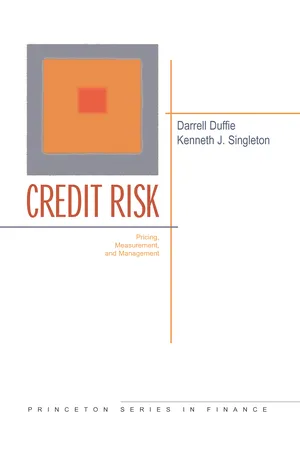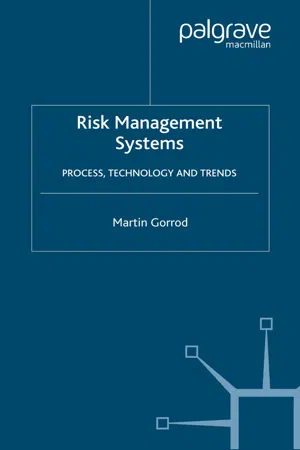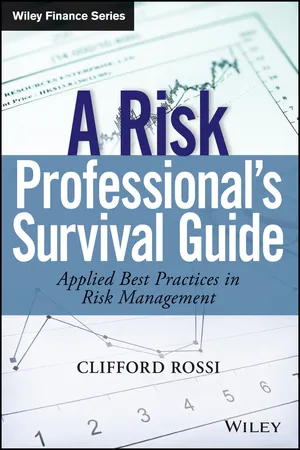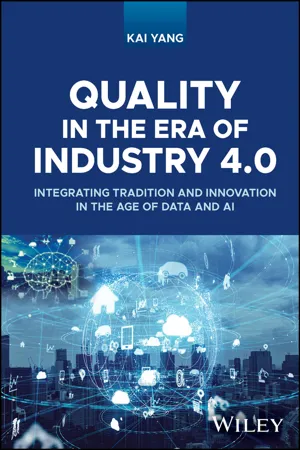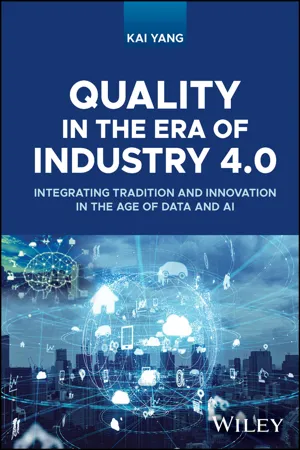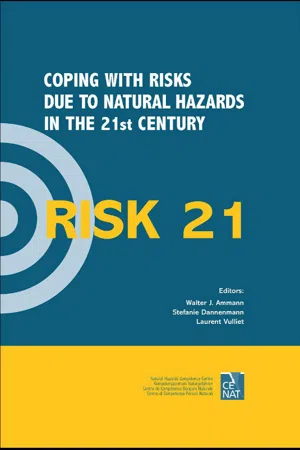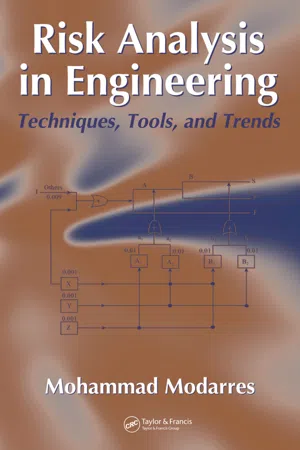Economics
Risk Management Techniques
Risk management techniques in economics involve strategies and tools used to identify, assess, and mitigate potential risks that could impact financial investments or business operations. These techniques may include diversification, hedging, insurance, and risk transfer. By employing these techniques, individuals and organizations can better protect themselves from adverse events and make more informed decisions regarding their financial activities.
Written by Perlego with AI-assistance
Related key terms
1 of 5
9 Key excerpts on "Risk Management Techniques"
- eBook - ePub
- Tony Merna, Faisal F. Al-Thani(Authors)
- 2011(Publication Date)
- Wiley(Publisher)
4 Risk Management Tools and Techniques4.1 INTRODUCTION
The management of risk is currently one of the main areas of interest for researchers and practitioners working in a wide range of projects because of the benefits of the process. Risk management is one of the key project management processes. Numerous techniques are available to support the various levels of the risk management process.Risk management is a tool which is increasingly used in organisations and by public bodies to increase safety and reliability and to minimise losses. It involves the identification, evaluation and control of risks. Implicit in the process is the need for sound decision making on the nature of the potential socio-technical systems and their predicted reliability. The need for safety measures and guidance as to where they should be displayed are, in theory, the natural products of combined probabilistic risk assessment/human reliability analysis (PRA/HRA) studies. In an ideal world, good assessment should always drive effective error reduction.This chapter describes the tools and techniques used in the assessment of risk, both qualitative and quantitative, and country risks which are often considered a major factor in risk assessment. The tools and techniques described can be used at corporate, strategic business and project levels.4.2 DEFINITIONS
French and Saward (1983) describe a tool as any device or instrument, either manual or mechanical, which is used to perform work. Distinguishing between a tool and technique is difficult. For the purpose of this book the present authors define tools as:The methodology which employs numerous techniques to achieve its aim .For example, risk management (tool) employs numerous techniques such as sensitivity analysis, probability analysis and decision trees. Value management (tool) employs such techniques as functional analysis, optioneering and criteria weighting. - Jonah C. Pardillo(Author)
- 2020(Publication Date)
- Society Publishing(Publisher)
8.1. INTRODUCTION With respect to the more and more uncertain world, the rate of modification is instant and fast. Risk management is more vital than ever before, and flexibility or adaptableness are the keys to cope up with it. Not every negative activity can be mitigated, but the suitable and right tactics will permit an organization or a firm to respond efficiently and even to prosper in the situations of crisis. This chapter of the book features the collective advice of experts that benefited the several organization or companies, irrespective of their culture and operating environment. This chapter will discuss the operational aspects of the risk management, and risks outside the control of any firm (Figure Risk Management in Uncertain World 201 8.1). The detailed coverage is consisting of: 1. Risk management structure; 2. Importance of risk management; 3. Steps involved in managing risk; 4. Risk management approaches; 5. Limitations of risk management; and 6. Risk management standards. Figure 8.1. A graph is plotted between uncertainty versus time. Source: Image by Wikimedia commons. 8.2. WHAT IS RISK MANAGEMENT? The risk management is defined as, it is the process of determining, evaluating, and regulating the dangers to the capital and the earnings of a company or a firm. These sorts of threats, or risks, could stem from an extensive variety of sources, which is consisting of financial uncertainties, errors in strategic management, legal abilities, accidents, and natural disasters. Business Management in an Uncertain World: An Introductory Text for Executives 202 Threats related to the security of the information technology (IT) and risks related to the data, and the risk management strategies in order to increase them, have become a top priority for the digitized organizations.- eBook - ePub
Credit Risk
Pricing, Measurement, and Management
- Darrell Duffie, Kenneth J. Singleton(Authors)
- 2012(Publication Date)
- Princeton University Press(Publisher)
2
Economic Principles of Risk Management
WHY DO MANAGERS of financial institutions care about financial risks? Are the economic incentives for managing market and credit risks the same, or does credit risk present different challenges, calling for distinct measurement systems or tools? These are some of the questions that we begin to address in this chapter. The economics of risk management for financial firms is far from an exact science. While rigorous and empirically testable models can be brought to the task of measuring financial risks, some of the benefits and costs of bearing these risks are difficult to quantify.In a hypothetical world of perfect capital markets—as we know from the work of Modigliani and Miller (1958), widely held to be the basis for the Nobel prizes awarded to Franco Modigliani and Merton Miller—any purely financial transaction by a publicly traded firm has no impact on that firm’s total market value. Capital markets, however, are not perfect. Market imperfections underlie significant benefits for banks and other financial institutions for bearing and controlling financial risks. Indeed, we name and characterize many of these benefits. One should not, however, anticipate a model allowing a practical cost-benefit analysis of risk that leads to precise quantitative trade-offs. Some of the important channels through which risk operates to the detriment or benefit of a financial corporation are not readily priced in the market.For instance, there are no obvious formulas to determine the market value that can be created by a financial firm willing to bear a given amount of risk through proprietary trading or intermediation. In perfect capital markets, after all, securities are priced at their fair market values, and trading could therefore neither add nor subtract market value. Any such formula relating financial risk bearing to the market value of the firm would, in the reality of imperfect capital markets, depend on such difficult-to-capture variables as the human abilities of traders and management, the information flows available to the firm, its reputation, its access to customers, and its organization of the risk-management function itself, not to mention a host of economic variables that characterize its economic environment. - eBook - PDF
Risk Management Systems
Process, Technology and Trends
- M. Gorrod(Author)
- 2003(Publication Date)
- Palgrave Macmillan(Publisher)
PART I An Introduction to the Risk Management Process 3 C H A P T E R 1 What is risk management? In the current volatile markets at the beginning of the new millennium, where newspaper headlines inform us how much money has been wiped off the stock market in a bad day or lost in the bankruptcy of a company, risk management is a key phrase. But what do we mean by risk manage- ment and why are regulators so concerned with this topic? Risk management is the application of analysis techniques and the definition of measures to quantify the amount of financial loss (or gain) an organization is exposed to, when certain unexpected and random changes and events occur. These events range from changes in observable or derivable market data (such as prices, or price volatility), process related failures, or credit (payment default type) events. Risk is therefore all about uncertain rather than definite outcomes. This uncer- tainty is not an undesirable thing. It is, however, important that the organization is aware of the impact of any outcomes that may occur and their implication for its profitability. For these risk measures or metrics to be of use, the calculated risks and actual losses arising should correlate. If this is not the case, the information on which the risk analysis is based, or the analysis itself, is either incorrect or inac- curate and must be rectified for the information to be of use. Even where it is thought that the risks are well understood, the risk manager needs to be constantly looking for previously unidentified risks, or inherent assumptions and failings in the calculation and management of those risks. This is especially true when these risks may only become - eBook - ePub
A Risk Professional?s Survival Guide
Applied Best Practices in Risk Management
- Clifford Rossi(Author)
- 2014(Publication Date)
- Wiley(Publisher)
CHAPTER 2 Overview of Financial Risk ManagementRISK MANAGEMENT DEFINED
Risk management describes a collection of activities to identify, measure, and ultimately manage a set of risks. People and organizations confront risks every day: For example, an individual decides to leave a relatively secure job for another with better opportunity and compensation across country, a government faces the threat of terrorist attacks on public transportation, or a bank determines which financial products it should offer to customers. While some risks are fairly mundane and others a matter of life or death at times, the fundamental process for assessing risk entails evaluation of trade-offs of outcomes depending on the course of action taken. The complexity of the risk assessment is a function of the potential impact from a particular set of outcomes; the individual deciding to take a different job is likely to engage in a simpler risk assessment, perhaps drawing up a pros and cons template, while a government facing terrorist threats might establish a rigorous set of quantitative and surveillance tools to gather intelligence and assign likelihoods and possible effects to a range of outcomes.Regardless of the application or circumstance, each of the assessments above has a common thread, namely, the assessment of risk. But what exactly is risk and is it the same across all of these situations? Risk is fundamentally about quantifying the unknown. Uncertainty by its very nature tends to complicate our thinking about risk because we cannot touch or see it although it is all around us. As human beings have advanced in their application of technology and science to problem solving, a natural evolution to assessing risk using such capabilities has taken place over time. Quantifying uncertainty has taken the discipline of institutional risk management to a new level over the past few decades with the acceleration in computing hardware and software and analytical techniques. - eBook - PDF
Quality in the Era of Industry 4.0
Integrating Tradition and Innovation in the Age of Data and AI
- Kai Yang(Author)
- 2023(Publication Date)
- Wiley(Publisher)
The adoption of quantitative risk assessment methodologies started to permeate, particularly in industries like nuclear power and aerospace, where considerable safety concerns prevailed [3]. The twilight of the 20th century observed a gradual metamorphosis from these traditional meth- odologies to more integrated and strategic risk management approaches. This transition was pro- pelled by myriad factors, including advancements in information technology, burgeoning regulatory requirements, and high-profile corporate failures, all of which spotlighted the limita- tions of traditional risk management approaches [18]. Traditional Risk Management Approaches usually involve the following steps: 7.3.1.1 Risk Identification This step is to identify the potential risks that could affect the organization. It is the first step in the risk management process and plays a vital role in establishing a robust risk management frame- work. It involves recognizing and documenting potential events or circumstances that could nega- tively or positively affect the achievement of an organization’s objectives. Here are several components and methods of the risk identification process: ● Information Gathering Techniques: A variety of techniques can be used to collect informa- tion about potential risks, including document reviews, interviews, surveys, and brainstorming sessions. It is often useful to involve people from different parts of the organization and with different types of expertise in this process. ● Risk Identification Tools and Techniques: These might include: 1) Checklists: Comprehensive lists of common risks by category or by industry can be helpful, although they must be used carefully to avoid missing out on unique risks relevant to the particular context. 2) SWOT Analysis: Strengths, Weaknesses, Opportunities, and Threats (SWOT) analysis can be used to identify both internal and external risks. - eBook - ePub
Quality in the Era of Industry 4.0
Integrating Tradition and Innovation in the Age of Data and AI
- Kai Yang(Author)
- 2023(Publication Date)
- Wiley(Publisher)
The emphasis predominantly gravitated toward hazard risks, which could be transferred utilizing insurance mechanisms. Risk was conceptually viewed as a phenomenon to be minimized or evaded. The adoption of quantitative risk assessment methodologies started to permeate, particularly in industries like nuclear power and aerospace, where considerable safety concerns prevailed [3]. The twilight of the 20th century observed a gradual metamorphosis from these traditional methodologies to more integrated and strategic risk management approaches. This transition was propelled by myriad factors, including advancements in information technology, burgeoning regulatory requirements, and high‐profile corporate failures, all of which spotlighted the limitations of traditional risk management approaches [18]. Traditional Risk Management Approaches usually involve the following steps: 7.3.1.1 Risk Identification This step is to identify the potential risks that could affect the organization. It is the first step in the risk management process and plays a vital role in establishing a robust risk management framework. It involves recognizing and documenting potential events or circumstances that could negatively or positively affect the achievement of an organization's objectives. Here are several components and methods of the risk identification process: Information Gathering Techniques : A variety of techniques can be used to collect information about potential risks, including document reviews, interviews, surveys, and brainstorming sessions - eBook - ePub
RISK21 - Coping with Risks due to Natural Hazards in the 21st Century
Proceedings of the RISK21 Workshop, Monte Verità, Ascona, Switzerland, 28 November - 3 December 2004
- Walter J. Ammann, Stefanie Dannenmann, Laurent Vulliet(Authors)
- 2006(Publication Date)
- CRC Press(Publisher)
http://www.alps-gmbh.com ).Table 5. Alternative decision rules to the question “how to decide about whether to go on a ski hiking trip or not?”. Table 6. Alternative decision rules to the question “how to decide about prevention measures to be realised in risk management?”.6 FINAL REMARKS AND OUTLOOK
In integral risk management, it usually is acknowledged that economics is asked to contribute to the estimation of potential damages as well as to the identification of cost efficient means in order to achieve exogenously defined acceptable risk. The task how to carry out risk assessment and acceptable risk usually is given to experts in the field or it is claimed that the political process has to answer this question.As was argued before, it seems adequate to concede that economics may not only contribute to the former but is also able to address the latter issue mentioned. By focusing on efficiency, economics not only refers to risk analysis and risk management but definitely also includes the issue of risk assessment. Thus, economics may give a hand to simultaneously determine potential damages, most efficient or optimal protection measures and acceptable risk.On the one hand, cost-benefit analysis as an output-oriented and welfare-economic approach balances social benefits against social costs, and thus claims to be able to determine both, optimal risk management strategies as well as optimal or acceptable (remaining) risk from a social perspective.On the other hand, the process-oriented economic approach based on institutional and constitutional economics explicitly focuses on alternative decision processes. It is concerned with efficiency or optimality as a meta-decision problem, i.e. it asks for the decision rules to be accepted by mutual consent by all members of society in order to be applied in acceptable-risk situations. - eBook - PDF
Risk Analysis in Engineering
Techniques, Tools, and Trends
- Mohammad Modarres(Author)
- 2016(Publication Date)
- CRC Press(Publisher)
Noneconomic methods that will be discussed in this chapter are exceedance analysis, value analysis, decision tree, and analytical hierarchy process (AHP). The types of risk-based and risk-informed decisions can also be grouped as: risk accept-ability, risk reduction, and risk alternative. In the risk acceptability decisions, the value of loss (or any figure of merit of interest, including performance measures) is usually compared to either an absolute or relative risk acceptance level, and determined whether the risk exceeds this limit, or estimating the probability of exceedance. This level can also be in the form of a single value, a range of values, or a distribution of values. Risk reduction decisions are those involving reduction of the frequency, consequence, or both associated with a risk by com-paring a number of options and selecting the best alternative. Finally, risk alternative decisions involve comparing several events and their risks (frequency and consequence) and selecting the best. In this chapter, several decision making methods along with examples of their applications have been discussed. 8.2 ECONOMIC METHODS IN RISK ANALYSIS Risks are controlled (through risk aversion) by reducing the frequency that specific risk scenarios will occur or by limiting the consequence by averting or limiting exposure pathways. The process requires having a risk assessment model, with which the method of reducing the 303 frequency or consequence can be applied. In the economic-based methods, the decision relies on the economic viability of the proposed risk-controlling approach. There are various methods to measure the risk viability that will be discussed in this section. Examples of risk control strategies are reducing the frequency of an initiating event, such as removing concentration of a corrosive agent in a pipe, thus reducing the possibility of a pipe break due to stress corrosion cracking failure mechanism in safety critical pipes in a facility.
Index pages curate the most relevant extracts from our library of academic textbooks. They’ve been created using an in-house natural language model (NLM), each adding context and meaning to key research topics.
